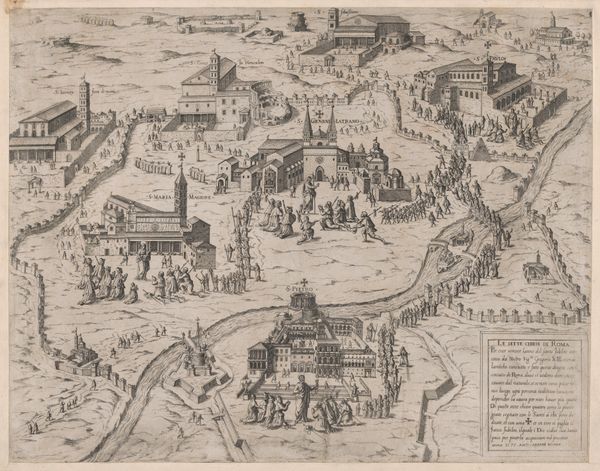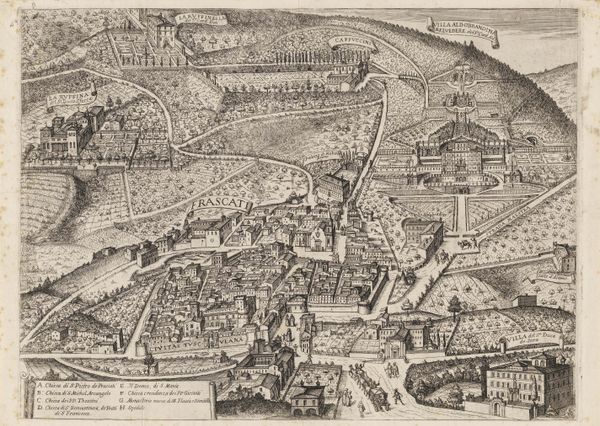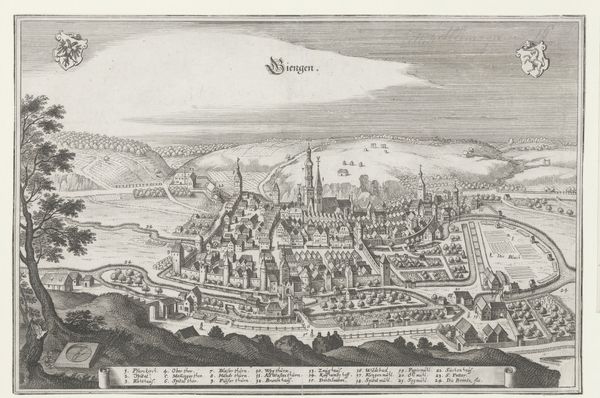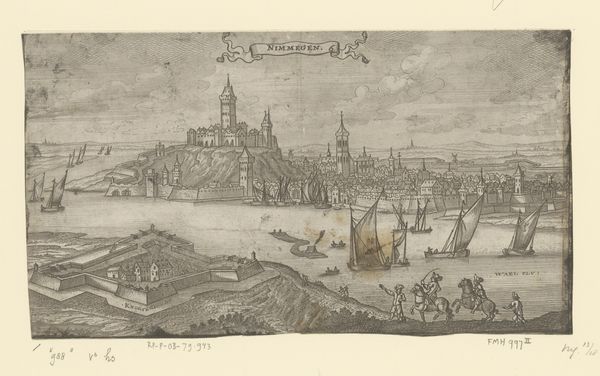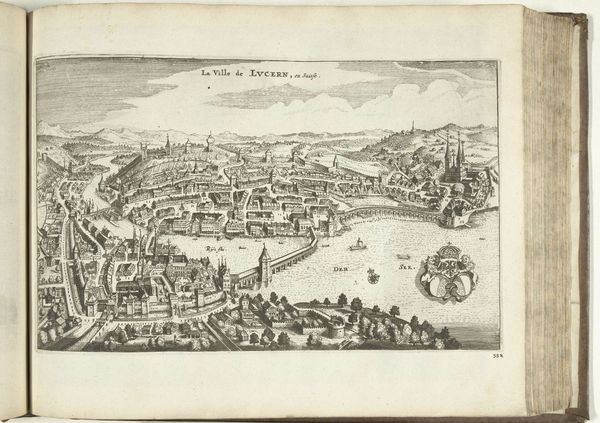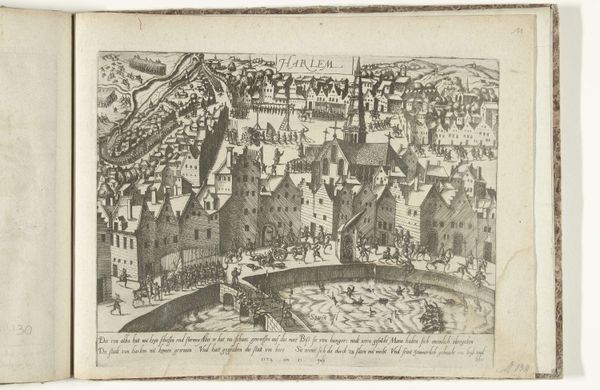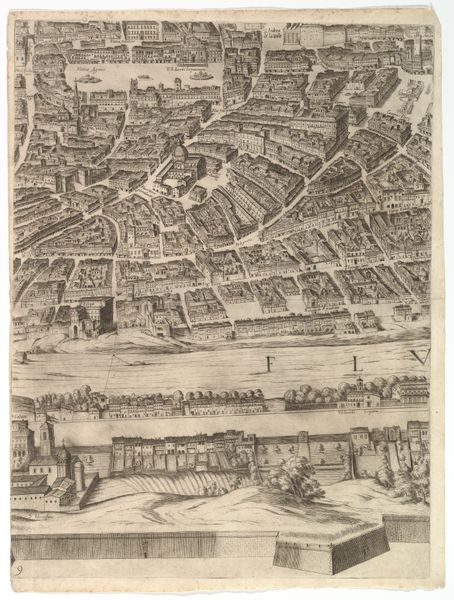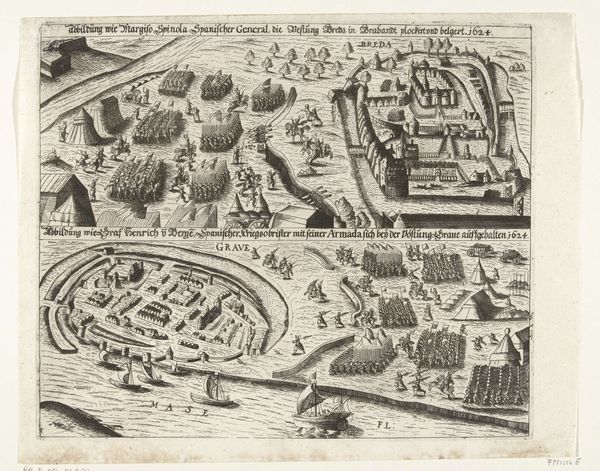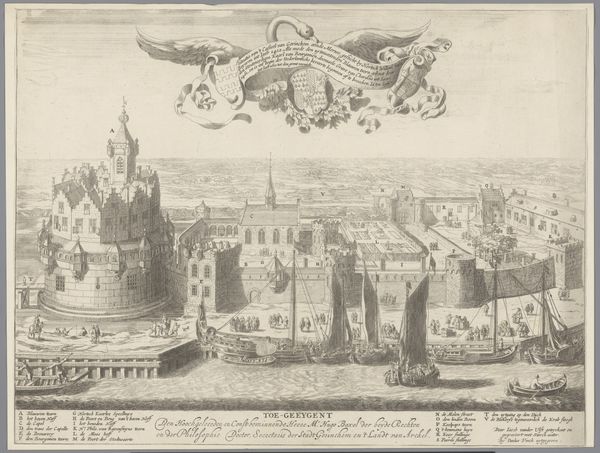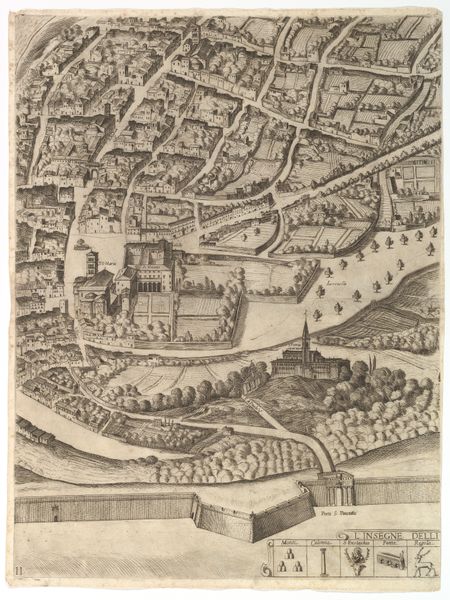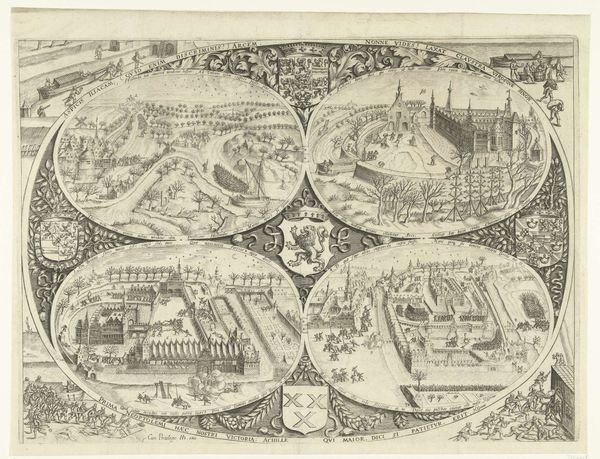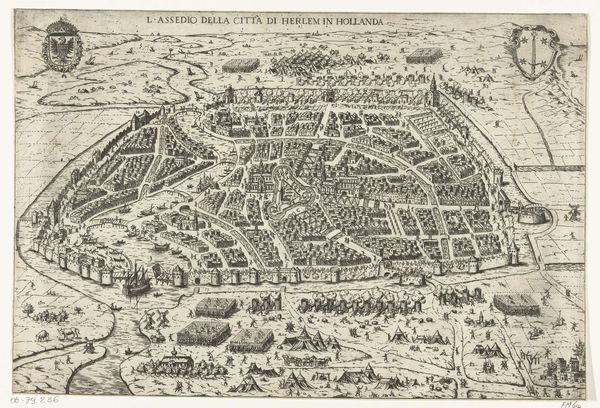
drawing, print, woodcut, engraving
#
drawing
#
medieval
# print
#
geometric
#
woodcut
#
line
#
cityscape
#
engraving
Copyright: National Gallery of Art: CC0 1.0
This image of Nuremberg, dating from 1512, was created using the technique of engraving, which involves incising lines into a metal plate and then using ink to transfer that design to paper. Look closely, and you can see the incredible detail achieved through the engraver's craft, from the textures of the buildings to the delicate rendering of light and shadow. The artist clearly possessed remarkable technical skill. But this wasn't just about virtuosity. The printmaking process allowed for the mass production of images, making them accessible to a wider audience than unique paintings or drawings. This had profound social and cultural implications, contributing to the spread of information and ideas during the Renaissance. The labor invested in each print, and the skill required, reflects a society where craft and commerce were intertwined, where artisans played a vital role in shaping the visual landscape. Considering these aspects elevates our understanding of the artwork, moving beyond mere representation to engage with the social fabric of the time.
Comments
No comments
Be the first to comment and join the conversation on the ultimate creative platform.

